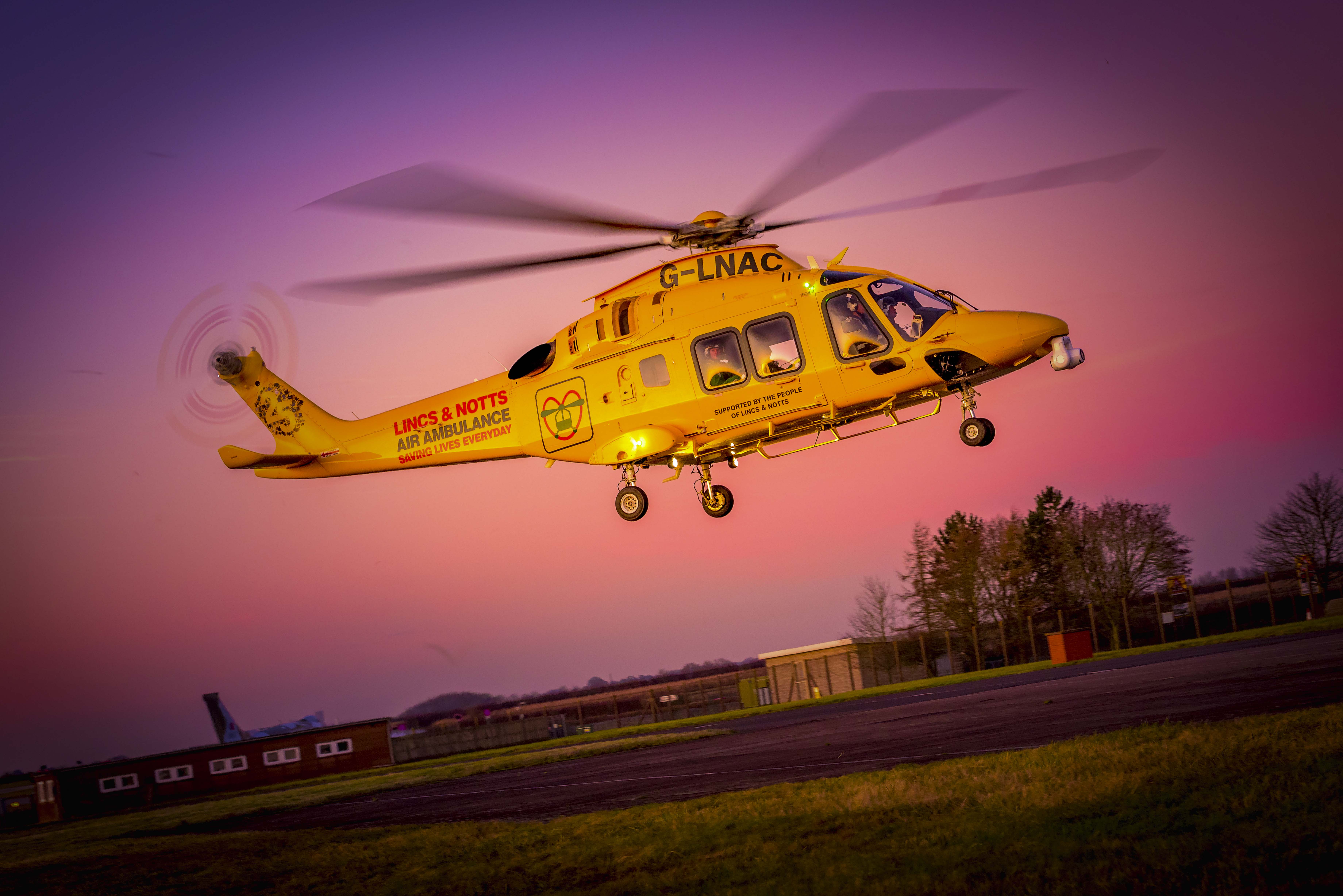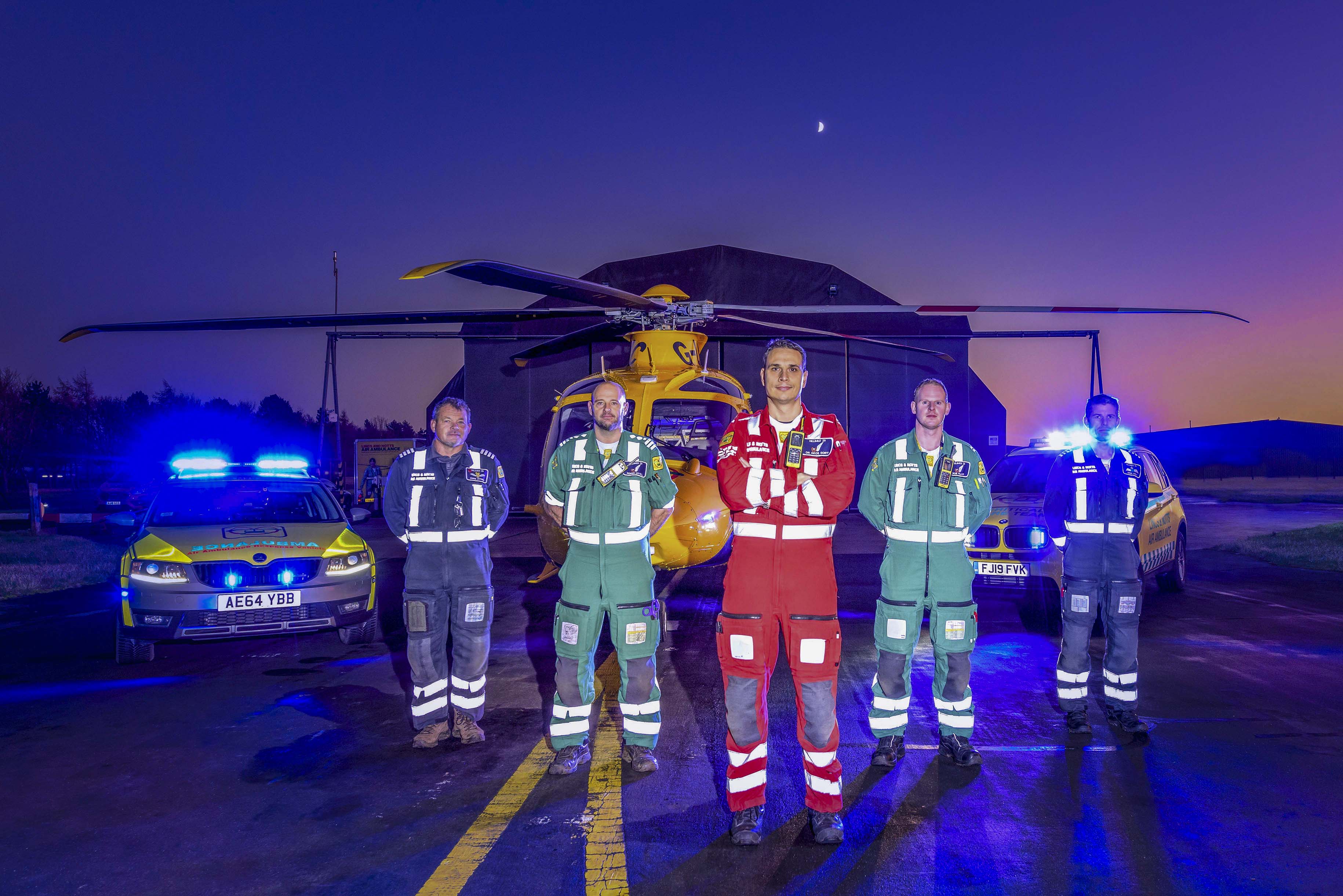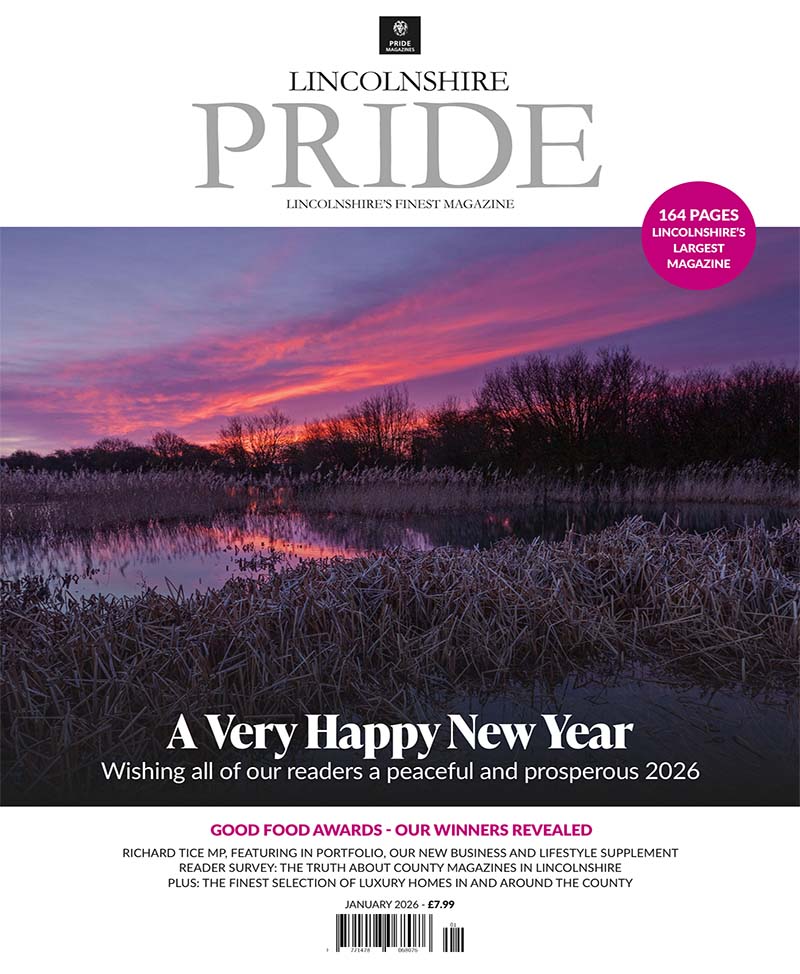
Lincolnshire’s Air Ambulance

The Lincolnshire & Nottinghamshire Air Ambulance has been saving lives in the sky for a quarter of a century, and yet the service relies entirely on charitable donations, with no direct government or NHS funding…
Let’s hope you never have to experience first hand just how remarkable the pilots, paramedics, doctors, fundraisers and other members of staff behind the Lincolnshire & Nottinghamshire Air Ambulance are. 2.5million people sleep soundly knowing that Lincolnshire’s ambucopter service provides an area of some 3,500 square miles with emergency medical support over and above the provision of NHS-funded EMAS.
And speaking of sleeping soundly, night time will be covered soon too, as by the time Pride goes to press the service will be operational 24-hours a day, 7 days a week, where the medical crew will be available to help approximately 438 additional patients overnight each year. There’s a catch though. Currently the cost of keeping the ambucopter in the air stands a £2.5million a year, a figure that will increase to £4million when seven-day a week night flying operations commence, which means it’s more important than ever that we all support the service.
“Increasing our hours of operation is something that requires not only careful planning, but also significant investment,” says Shani Wortley. “Whilst our crew have worked tirelessly to undertake and learn processes involved by using Night Vision Goggles and other illumination systems that our aircraft is fitted with, we vitally need to raise even more funds to enable us to provide a full 24-hour Helicopter Emergency Medical Service (HEMS).”
“Many still believe the service is NHS or government funded but in fact all of the money raised is from donations, legacies, our weekly lottery and our 10 charity shops.”
The good will of the public is what keeps the service in the sky and sadly it’s all too easy to take the ambucopter for granted, but if that fundraising and that support ceases, so does the service.
“We’ve been established in the area for a quarter of a century, and our worth has been proven to date 20,500 times over. That’s how many times we’ve been called out to potentially life-saving missions.”
“There are so many ways in which the availability of an air ambulance benefits the community. Travelling at 180mph and reaching a callout ‘as the crow flies’ provides the ability to reach a casualty rapidly, compared to a land-based ambulance. Traffic problems aren’t a factor in reaching an incident, and we’re less than 20-minutes flying time from anywhere in our catchment area. That’s not just advantageous for reaching a casualty, but for performing transfers to the hospital most suitable for their condition.”
“It’s really important to state, though, that we’re a supplement to, rather than a replacement for, land ambulances. We have a great relationship with our EMAS colleagues and work together as closely as possible.”
“Our Paramedics receive enhanced training enabling them, and our team of specialist Doctors, to undertake procedures such as general anaesthesia, emergency blood transfusions, and administration of advanced pain relief – procedures usually only possible in a hospital. Access to us is via 999 call-takers who can then refer an incident to the HEMS desk.”
There’s no such thing as a typical day – every day is different – but an average for the service would be three callouts. Almost half of their workload is attending road traffic collisions, but the county is uniquely unfortunate in terms of the prevalence of equestrian and industrial or farming incidents. Being able to reach a casualty in a remote field is advantageous in our part of the world.
The charity began operating a Bolkow aircraft before upgrading to an MD902 Explorer in 2000. In 2017, the charity upgraded its aircraft to their new state-of-the-art night capable AgustaWestland 169. The new aircraft is much larger and benefits from 360° access to a patient whilst in flight.
It’s substantially quicker enabling the crew to reach a casualty faster and has greater endurance for longer flying hours before refuelling.
The aircraft is also ‘top of the range’ in the sense that it can carry an extended number of life-saving drugs and equipment. It’s ideal for reaching cardiac patients and is one of the few aircraft which has the ability to perform defibrillation of a patient whilst in the air.
“Excellent patient care is at the heart of everything we do and the combination of speed, endurance, and technology of the new aircraft gives patients the very best chances of survival possible in their greatest hour of need,” says CEO Karen Jobling.
“We are proud to say that our charity aims to save lives every day, and with this new aircraft we’re happy that we can continue doing so for many years to come.”
“This is only possible thanks to the generous support from the people, organisations and businesses in the communities within which we serve, so a heart-felt thank you must go out to each and every one of them.”
For the first winter since the service began in 1994, with its shorter days and longer nights, everyone in the catchment area can benefit from a service that can operate 24-hours a day. It’s impossible to overstate the importance of the service, nor to underline the fact that the service is entirely predicated on charitable donations.
Without the huge support of its volunteers, fundraisers and without the dedication of the pilots, paramedics and doctors, it’s a service that wouldn’t exist to safeguard the lives of the 2.5m people who don’t realise how important the air ambulance is, until they’re unfortunate enough to need its help.

The Lincs & Notts Air Ambulance in Numbers…
£2,500,000: The current cost of funding to keep the service operational each year.
£4,000,000: The cost of keeping the service operational will rise to £4m annually once the ambucopter begins operating 24 hours a day, 7 days a week.
20,400: The number of missions the air ambulance has flown since the service began operating in 1994.
£2,500: The current cost of each mission.
3,500: The number of square miles the service covers across Lincolnshire and Nottinghamshire.
2,500,000: The number of people the air ambulance provides medical support to across its catchment area.
180mph: The aircraft has a cruising speed of 180mph; over three times faster than a land ambulance.
20: The number of minutes it takes the air ambulance to reach the furthest point in its catchment area.
Three: The average number of callouts during a shift when the service operates during daylight hours, from 7am-7pm.
999: The service is integrated into the 999-service run by EMAS, the East Midlands Ambulance Service. When a call-handler believes the aircraft will benefit an emergency, they can expedite a call to the HEMS – Helicopter Emergency Medical Service – desk who will monitor the call and scramble the helicopter if it’s appropriate to do so.
45%: Almost half of the aircraft’s workload is attending road traffic collisions, (RTCs). Sadly the summer month see many motorcycle incidents.
£1,000: The star prize in the service’s weekly lottery. Together with its 10 charity shops and donation & legacies, it’s the only way the service is funded.
24/7: The aircraft will begin operating 24/7 in spring 2020 for the first time in its service.






